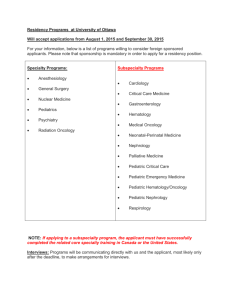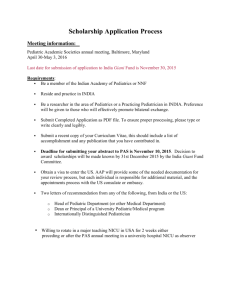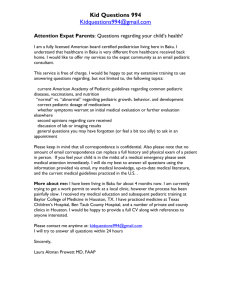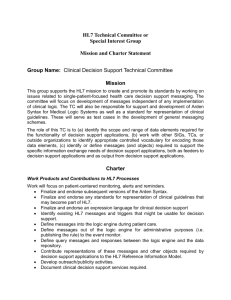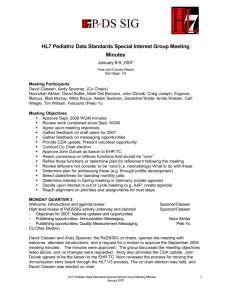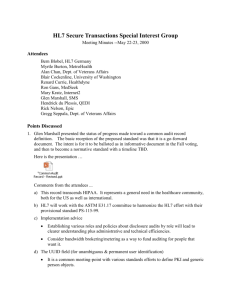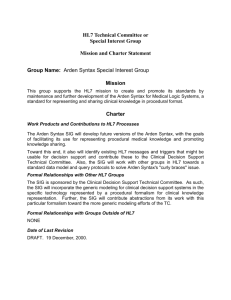HL7 Child Health Work Group
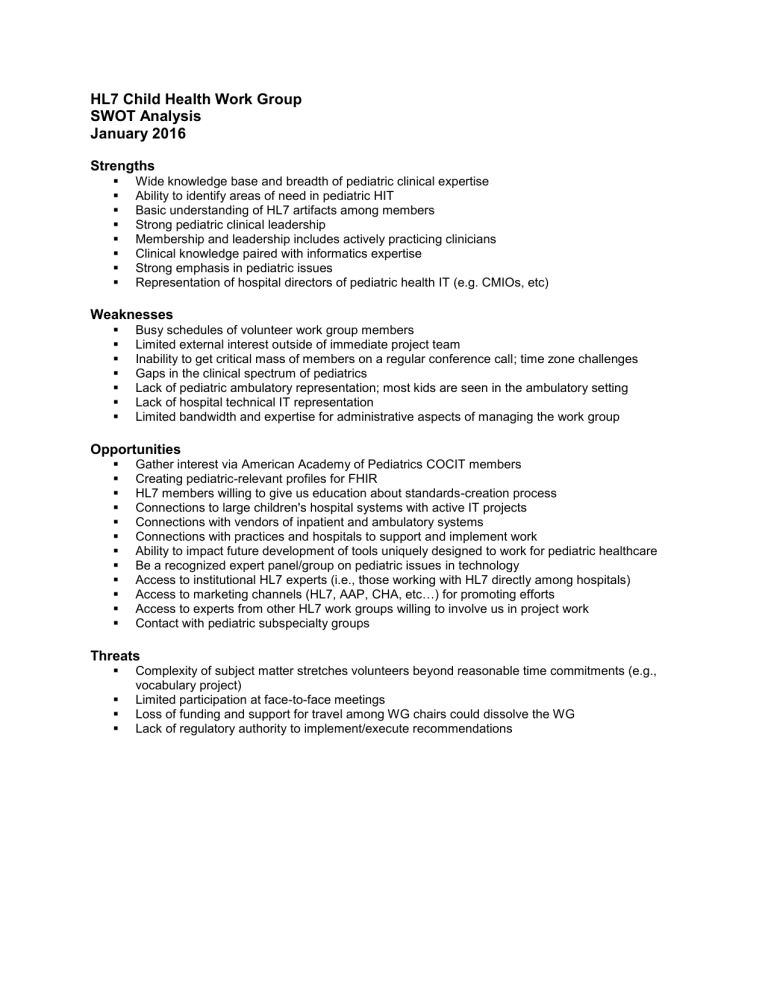
HL7 Child Health Work Group
SWOT Analysis
January 2016
Strengths
Wide knowledge base and breadth of pediatric clinical expertise
Ability to identify areas of need in pediatric HIT
Basic understanding of HL7 artifacts among members
Strong pediatric clinical leadership
Membership and leadership includes actively practicing clinicians
Clinical knowledge paired with informatics expertise
Strong emphasis in pediatric issues
Representation of hospital directors of pediatric health IT (e.g. CMIOs, etc)
Weaknesses
Busy schedules of volunteer work group members
Limited external interest outside of immediate project team
Inability to get critical mass of members on a regular conference call; time zone challenges
Gaps in the clinical spectrum of pediatrics
Lack of pediatric ambulatory representation; most kids are seen in the ambulatory setting
Lack of hospital technical IT representation
Limited bandwidth and expertise for administrative aspects of managing the work group
Opportunities
Gather interest via American Academy of Pediatrics COCIT members
Creating pediatric-relevant profiles for FHIR
HL7 members willing to give us education about standards-creation process
Connections to large children's hospital systems with active IT projects
Connections with vendors of inpatient and ambulatory systems
Connections with practices and hospitals to support and implement work
Ability to impact future development of tools uniquely designed to work for pediatric healthcare
Be a recognized expert panel/group on pediatric issues in technology
Access to institutional HL7 experts (i.e., those working with HL7 directly among hospitals)
Access to marketing channels (HL7, AAP, CHA, etc …) for promoting efforts
Access to experts from other HL7 work groups willing to involve us in project work
Contact with pediatric subspecialty groups
Threats
Complexity of subject matter stretches volunteers beyond reasonable time commitments (e.g., vocabulary project)
Limited participation at face-to-face meetings
Loss of funding and support for travel among WG chairs could dissolve the WG
Lack of regulatory authority to implement/execute recommendations



